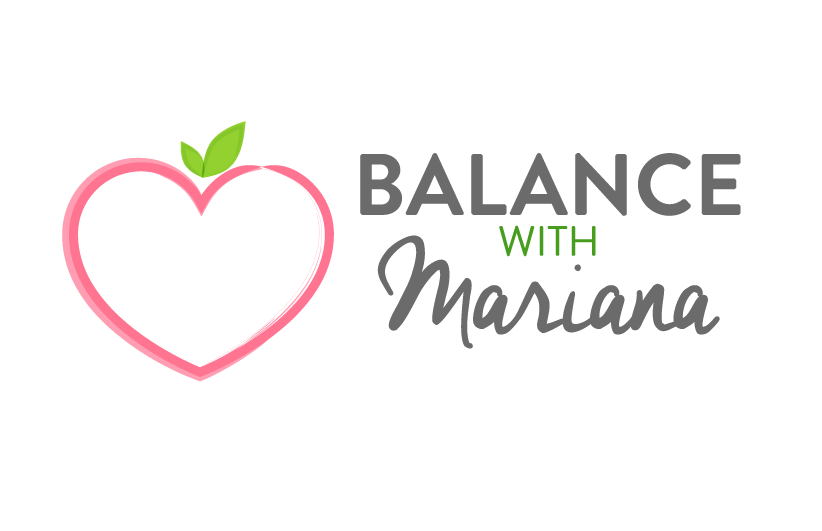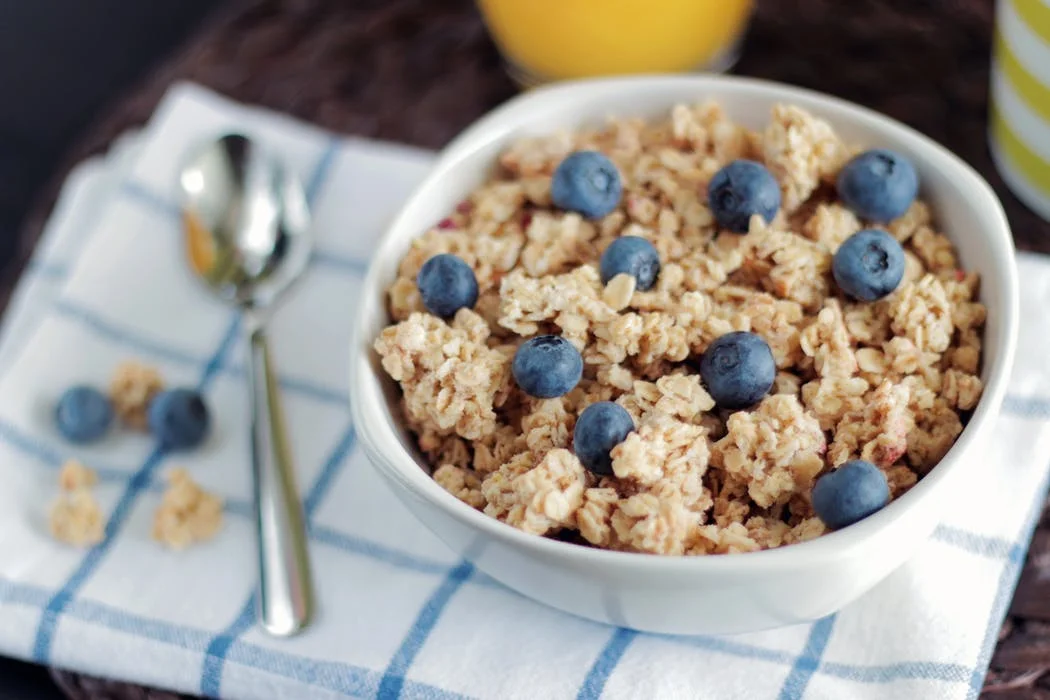It’s becoming increasingly difficult to keep children healthy with the poor food choices served at schools, the horrific ingredients included in “child-friendly” snacks, and the amount of marketing done specifically for kids (of these not-so-healthy foods!). Children obesity has been increasing worldwide. And as I speak to a lot of my clients, I find that this is becoming a growing concern for all parents.
So let me share with you the key common foods that I would avoid feeding your kids, and some healthier suggestions.
While it may be impossible to control what they eat outside the house, making small changes at home can make a big difference.
Here are 6 foods commonly eaten by kids that you should look out for (because they're probably worse than you think!), and some much healthier alternatives:
1. YOGURT - Yogurt for kids is typically very high in sugar, filled with artificial colors and flavors, and actually lacking in probiotics – which is the key reason you want to be eating yogurt in the first place!
ALTERNATIVE: Organic greek yogurt or coconut yogurt, and you can make it more “kid friendly” by adding some raw honey, chopped fruit and/or low-sugar granola. Just always look at the grams of sugar and ingredients!
2. FRUIT JUICES AND SODAS - These sugar-sweetened beverages provide almost no nutritional content and can increase your child’s risk of tooth decay and other diseases. Don’t be fooled by the “natural” labels when actually these drinks are usually filled with sugar, high-fructose corn syrup, artificial sweeteners, and other chemicals. Always read ingredients and look at grams of sugar. Some of the worst (and most misleading) include: Juicy Juice, Sunny Delight, Capri Sun, Snapple, even V8 splash.
ALTERNATIVE: Water! Drinking enough water is so important for a healthy body and mind. It will keep your kids hydrated – especially after sports and in the summer - without all those nasty additives. Other options include: Coconut water (has just naturally derived sugar), fresh homemade lemonade, homemade herbal iced tea with stevia, or if you have a juicer, make your own Fruit (& Veggie) juice where the fruits mask the veggies (ex. juicing carrots with oranges and apples).
3. CEREALS – The nutrition content in children’s cereals is horrifying. They’re filled with sugar and artificial flavors, colors, even artificial sweeteners at times. Having a bowl of this in the morning will spike up your kid’s blood sugar and affect his/her performance at school, no doubt about it. The reason why they’re “fortified” with vitamins and minerals is because they’re so devoid of nutrition before artificially adding these vitamins. But you’re better off taking a multi-vitamin without all the added chemicals.
Some of the worst ones include: Kellogg’s Honey Smacks, Fruit Loops, Smorz, Apple Jacks; Quaker Oats Cap'n Crunch (all varieties) and Oh!s; Post Golden Crisp.
ALTERNATIVE: Look for organic cereals that are free of pesticides and GMOs. Opt for ones lower in sugar, ideally less than 15g per serving (with little or no added sugars or sweeteners) and high in fiber (ideally 3g or more per serving). Lastly they should have FEW (and all natural) ingredients.
Some good options (primarily in the US) include:
- Nature’s Path Organic cereal – all organic but they have a wide variety, opt for ones higher in fiber and lower in sugar
- Go Raw granolas – organic, gluten free, and made from sprouted seeds
- “EnviroKidz” cereals –organic and gluten-free
- Lydia’s Organics - organic, raw, gluten-free and vegan
Another great options is preparing homemade oatmeal using organic steel-cut oats, some chopped nuts, organic low-fat milk (or dairy-free milk), a small amount of raw honey, cinnamon and/or chopped fruit.
In Nicaragua, another good option is a homemade granola with limited ingredients/sugar, like The Granola Spice varieties, but make sure the serving size isn't too big, and mix it with some sliced fruit and maybe additional nuts/seeds.
4. HOT DOGS – Hot Dogs are some of the most processed foods (I’d hardly call them meat!), filled with added nitrates (compounds added to hot dogs and cured meats to improve color, texture and extend their shelf life), as well as hormones, preservatives, and tend to be high in both unhealthy fats and sodium.
ALTERNATIVE: Organic chicken sausages, with NO antibiotics nor added hormones – they’re way lower in fat and sodium, and free of a lot of the junk that goes into regular hot dogs.
Suggested brands include:
- APPLEGATE organics dinner sausages
- Aidells Organic dinner sausages
- Bilinski’s Organic chicken sausages
Note: with all 3 brands, make sure you choose their organic varieties, and I personally prefer the diary-free flavors (ex. Organic Chicken & Apple, Organic Andouille, Organic Sweet Italian Sausage, etc.)
If your kids really want pork or beef, Organic Prairie makes some organic pork sausages and KOL Foods makes some organic beef sausages (all natural, nitrate-free and grass-fed)
If you can't find organic sausages (ex. for my readers in Nicaragua) opt for good quality italian sausages from a deli (slightly better than hot dogs) or better yet, sliced turkey breast (make sure it's fresh roasted turkey from the deli, not the cured, ultra-processed turkey-like-ham).
5. CHICKEN NUGGETS & FISH STICKS. Like hot dogs, these are some of the most industrialized foods. In general, they’re roughly 50% fat (and not the healthy kind), and contain more carbs than protein! And it’s the worst type of carbs, coming from the fillers and breading. So VERY different from real chicken breast. Not to mention they usually contain MSG and are deep-fried in oils containing trans-fats.
ALTERNATIVE: Make your own nuggets/sticks the night before, using chopped skinless free-range chicken breast (or any white fish, preferably wild) and whole-wheat bread crumbs (maybe seasoned with fresh herbs), then baking them in the oven vs. frying. And get the kids involved in cooking – they can help with the battering and even have them create fun shapes!
6. LUNCHABLES (or any pre-packaged lunch packs, usually with crackers & processed cheese & meats) – they’re extremely unhealthy, filled with preservatives, high fructose corn syrup (HFCS), hydrogenated oils, artificial flavors MSG, nitrates, ETC. Not to mention they’re high in sodium and fat, low in fiber, AND the price is hiked up just for packaging these items together!
ALTERNATIVE: Pack your own version, using whole wheat crackers, fresh low-sodium deli turkey, organic low-fat cheese, and some fresh fruit like grapes, berries or sliced apples. It’s just as easy with no preparation required except for placing the ingredients into a container!
Applying these 6 swaps will make your kids a whole lot healthier! Start with one, and work your way up.
In general, it’s important to look at ingredient labels and avoid conventional packaged goods filled with harmful ingredients (a long list of ingredients, with many that you can’t pronounce is always a red flag), and look out for sugar and sodium content. And when possible, go organic or better yet, make your own versions!



